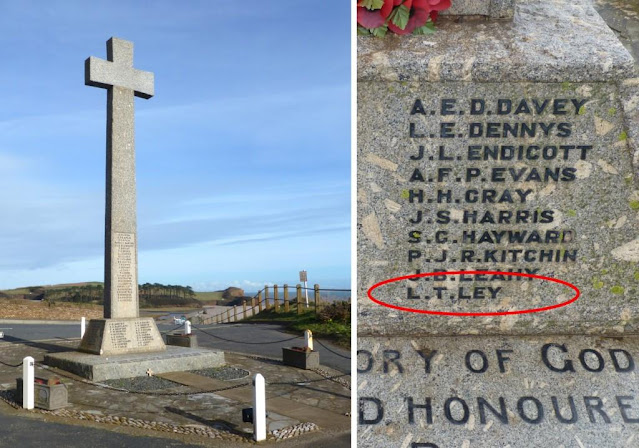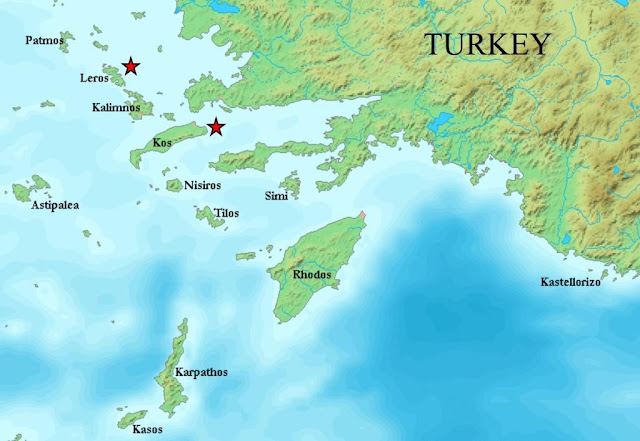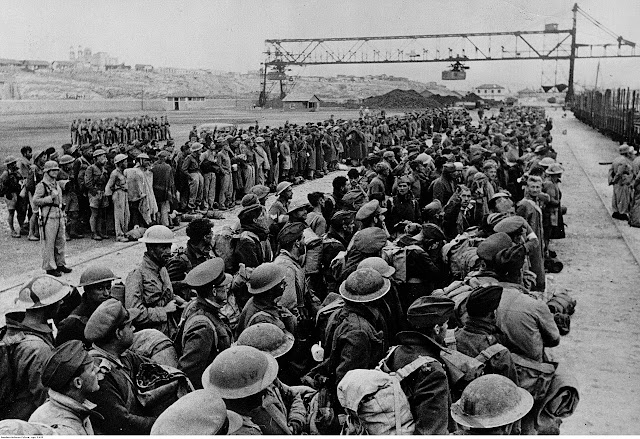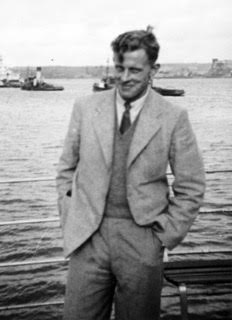WW2 100 – 5 October 1944 – A grave on the Adriatic coast: Private Leonard Thomas Ley (1913-44) 1st Battalion, The King’s Own Royal Regiment (The Lancaster Regiment)
Continued from 31 Aug 1944
GUNNER HERBERT JAMES SKINNER (1914-44)
113th Field Regiment, the Royal Artillery
https://budleighpastandpresent.blogspot.com/2021/04/ww2-75-31-august-1944-death-of-black.html
Budleigh war memorial at the junction of Coastguard Road and Salting Hill
Leonard
was a local man whose name appears on Budleigh Salterton’s War Memorial and the
news of his death would have been greeted with much sorrow in the town.
Describing
the service and parade held by the local branch of the British Legion on
Saturday 11 November 1944, the Exmouth Journal noted that Leonard had been a Legion
member for many years, and that the Legion Chairman, Colonel Henry McRae DSO,
OBE had referred to the sad news.
The grave of Ellen and Thomas Ley in Block E,
Row 10 at St Peter’s Burial Ground, Moor Lane
An earlier sadness for the family before the
outbreak of war had been the death of Leonard’s mother Ellen, née Powlesland, on 31 January 1937, aged only 50. Parish
records list her as residing in Knowle Cottages at that time. Leonard’s father, Thomas
Ley, lived until 1958, when he died on 23 October at the age of 77; his home at
that stage was ‘Chestnut View’ in Knowle.
The grave of both of Leonard’s parents is in St Peter’s
Burial Ground in Moor Lane, Budleigh, and the headstone also records the death
of Leonard himself.
The useful Devon Heritage site tells us that at the beginning of WW2 Leonard had joined the Devonshire Regiment, but from the Commonwealth War Graves Commission (CWGC) record we learn that at the time of his death he was a member of the 1st Battalion of the King's Own Royal Regiment (Lancaster), with the Service Number 5616064.
I do not have access to Leonard’s service record. I’m not an expert in these matters, but I’ve been struck by various aspects of service records. It seems that they rarely hold as much information as people think. Archivists point out that they are paper records which follow the career of the individual and in most cases make no reference to engagements or theatres of operation.
There seems to be a rather bureaucratic procedure to obtain them. An expert on the wwwtalk.com forum tells me that the process is taking about a year as demand has grown during the Covid 19 lockdown and the number of staff available to deal with enquiries has diminished.
Currently a fee of £30 is payable for each record when an application is made via the www.gov.uk website. I cannot see why access to service records for the CWGC-registered war dead should not be totally free.
A copy for each service person could be viewed via the CWGC website, in the same way that the website shows details of the headstones and war dead graves. Maybe this should be an aim for the authorities in the UK as we approach the 2039 centenary of WW2, when so many more communities may wish to honour their war dead as individuals.
Without Leonard’s service record, I had assumed that he had joined the 1st Battalion of the King's Own Royal Regiment at an early stage in the war.
The Battalion’s history is well documented. It was stationed in India, at Madras, on the outbreak of war, subsequently moving to Napier Barracks, Karachi. It later served with the 17th Indian Infantry Brigade.
Photograph with a view
looking north-east towards the Cantonments and Napier Barracks at Karachi, with
Elphinstone and Frere Streets in the foreground, taken by an unknown
photographer, c.1900. Image credit: British Library
You can see some images of activities with The King's Own Royal Regiment at Karachi here
However this may have been a wrong assumption. Peter Donnelly, Curator of the King’s Own Royal Regiment Museum, Lancaster, kindly read through the first draft of my article and investigated the regimental archives. He is pretty sure that Leonard , transferred into the King’s Own in early 1940. The Museum has a register of men who transferred in from other Regiments, and Leonard is certainly in the 1940 book, which suggests that he could have joined the King’s Own as early as February 1940.
Indeed, as Peter pointed out, the man who is listed above Leonard in the register was killed in May 1940 in France. He wondered, therefore, whether Leonard joined one of the newly formed battalions of the King’s Own.
Troops from the first contingent of the British
Expeditionary Force embarking for France at Southampton, England, September
1939. Image credit: Captain Console, War Office official photographer: photograph
H 27 from the collections of the Imperial War Museums
The 6th, 7th, 8th,
and 9th Battalions served with the British Expeditionary Force (BEF)
as GHQ (General Headquarters) troops during the 1940 campaign in both France
and Belgium, but only the 8th included men who fought in Italy in
1944.
General Lord Gort (centre), commander of the BEF, with
General Alphonse Georges, commander of the French Ninth Army, after receiving
the Grand Croix of the Legion of Honour at Arras, France. Image credit: War
Office official photographers Lieutenant L.A. Puttnam, Lieutenant Davies. Photograph
F 2094 from the collections of the Imperial War Museums
In
April 1940, the 8th Battalion joined the British Expeditionary Force with
the aim of assisting in the construction of defensive works.
King George VI inspects the construction of the Gort Line from the top of a new pill box, December 1939. This is photograph O 1785 from the collections of the Imperial War Museums
A series of concrete bunkers, pillboxes, weapons pits and anti-tank ditches were built as part of what was known as the Gort Line.
However,
following the German invasion on 10 May 1940, the 8th Battalion made
their way back to Dunkirk and were evacuated to the UK. On their return they were
employed on anti-invasion duties in the South West of England and in October
1940 part of the Battalion was sent to the Scilly Isles.
Aerial photograph of British cruiser HMS Manchester. Image credit: Royal Navy official photographer - This is photograph FL 4159 from the collections of the Imperial War Museums (collection no. 8308-29). The ship was attacked by Italian torpedo-bombers en route from Gibraltar to Malta with soldiers of the 8th Battalion on board on 23 July 1941. A number of the crew and five officers and seven men of the Battalion were killed
In July 1941, the Battalion moved to Scotland, from where they set sail for Malta. En route, on 23 July 1941, HMS Manchester, carrying the majority of the Battalion, was torpedoed and had to limp back to Gibraltar. The Battalion finally arrived in Malta on board other ships on 2 August, and remained on the island until November 1943.
A heavily bomb-damaged street in Valletta, Malta.
This street is Kingsway, the principal street in Valetta. Service personnel and
civilians are present clearing up the debris.
Russell, J E (Lt) - Royal Navy official photographer - This is
photograph A 8701 from the collections of the Imperial War Museums (collection
no. 4700-01)
So Leonard, if he had been with the 8th
Battalion at this time, would have experienced all the privations and hardships of the
Siege of Malta. The fight for control of this strategically important
island and British Crown Colony pitted the air forces and navies of Fascist
Italy and Nazi Germany against the Royal Air Force and the Royal Navy.
Image credit: NWMA Malta
The Battalion's
main role was to provide the defence for the various airfields. In August 1942, for example,
Malta, 1942: Construction
of a blast wall at Ta Salvatur, where the Battalion Headquarters was based. Image credit: The King’s Own Royal Regiment Museum, Lancaster. Accession number KO1277/14
Soldiers stand by to unload from a ship at the harbour in Malta, July 1942 Image credit: Imperial War Museums GM 1151
The Battalion was also required to assist with the unloading of the supplies ships which made it to Malta.
Headquarters Company signallers waiting for the next raid with binoculars at the ready, Malta 1942. Image credit: The King’s Own Royal Regiment Museum, Lancaster. Accession Number KO1277/10. More photos of the Battalion in Malta can be seen here
For over two years the island suffered ferocious enemy air attacks but by 16 October 1942, it was clear to the Luftwaffe’s Generalfeldmarschall Albert Kesselring that the defenders were too strong. It was also clear that the situation in North Africa required German air support. The Malta offensive was called off. By November 1943, the 8th Battalion moved to Palestine.
A merger with the 1st Battalion took
place early in 1944, following the disastrous events which had occurred the
previous year on the Greek island of Leros.
The Dodecanese group of islands, showing Kos and Leros. Image credit: www.military.wikia.org
On 3 September 1943, Italy had signed an armistice with the Allies at Cassibile, a
village in Sicily, on 3 September 1943, leading Churchill to believe that
strategically important Greek islands with Italian garrisons could now be occupied
by the Allies. Clearly, he felt, it was vital to avoid what had happened on Crete, which had fallen to German paratroops two years
earlier, in May 1941.
British prisoners of war under guard after being captured by German troops
on Kos Image credit: Dick-Wikipedia
However Churchill failed to persuade the US of the value of an Aegean campaign. By mid-September 1943, British special forces and infantry from Malta had secured several Greek islands, including Kos and Leros, but Germany’s Generalleutnant Friedrich-Wilhelm Müller, commander of the 22nd Infantry Division at Crete was ordered to seize the two islands. German forces, with strong air support, quickly overwhelmed the Italian garrison on Kos and its British reinforcements and the island fell on 3-4 October.
The next disaster for the Allies came with the surrender of Leros on 16 November. The island’s Italian garrison of over 5,000 men had been reinforced by British troops including the 1st Battalion of The King's Own Royal Regiment, but the attacking German forces had the twin advantages of local numerical superiority and air control.
Most of the battalion was captured by the Germans after the Battle of Leros, with only 57 officers and men managing to escape the island.
Perhaps typical of comments by 1st Battalion veterans who fought on Leros was the view of Private Eric ‘Smudger’ Smith, quoted on the Wartime Memories Project website: his main gripe was ‘the lack of air cover, obsolete equipment, and incompetent Allied command’.
Leros War Cemetery Image credit: Nabokov-Wikipedia
More than 50 of the Battalion were killed and an unknown number wounded and taken prisoner. The handful who escaped made it to Palestine .
Lieutenant
Colonel Sir Richard Neville Anderson. Image credit: National Portrait Gallery
What was left of the 1st Battalion was merged on 30 January 1944 with the 8th Battalion of The King's Own, but the unit retained the title of the 1st Battalion. The reformed battalion, under the command of Lieutenant Colonel Richard Neville Anderson, would serve in the Italian Campaign with the 25th Indian Brigade, part of the 10th Indian Division, for the rest of the war.
So, from this point, we can say that Leonard was certainly with the 1st Battalion. Although I have not found any photos or documents relating directly to him there is plenty of material about the campaigns in which he would have been involved, particularly during his time in Italy. This is thanks to The King’s Own Royal Regiment Museum in Lancaster’s City Museum which has an excellent website at www.kingsownmuseum.com There is also a very active Facebook page at https://www.facebook.com/Kings-Own-Royal-Regiment-Museum-Lancaster-41252640849/
German defence lines south of Rome. Image credit: Wikimedia
On 9 March 1944, the 10th
Indian Division was ordered to transfer to the Italian front. The 1st
Battalion of The King’s Own landed in Italy on 28 March, set up camp north of
Taranto and spent the next few weeks in intensive training before moving on 20 April
to the line on the Adriatic front of the Allied advance northwards. By the end
of May the Battalion was 15 miles from Cassino.
Part of the 10th Division’s role was to engage in frequent patrols to prevent the enemy from sending reinforcements to the ongoing Battle of Monte Cassino. On 4 June, the 10th Division was moved to the town of Venafro, 11 miles east of Cassino, where it continued its training in mountain and urban warfare.
Map of the upper Tiber valley, showing places in my text marked with a star Image credit: Wikimedia
On 26 June the 10th
Indian Division moved north to the Tiber valley. The 20th and 25th
Indian Brigades followed the river along its west bank, while the 10th
Brigade, including the 1st Battalion of The King’s Own advanced on the
eastern side.
This picture shows a 10th Division AEC Mk
II armoured car, from the divisional reconnaissance regiment, Skinner's Horse,
crossing a Bailey bridge over the moat at Umbertide. Image credit:
www.mazzaforte.com
German resistance grew stronger near Umbertide, 20 miles north of Perugia, but the town was taken by the Division on 2 July.
Slowing the Allied advance was an obvious aim of the enemy,
and it’s worth mentioning the methods used, as described by a veteran of the 12th
Podolski Lancers, a unit which fought with the 2nd Polish Corps and
was the first Allied patrol to reach ruins of the captured Monte Cassino
monastery on 18 May. Contributing to a
2005 recording in the BBC WW2 People’s War series, Romuald E. Lipinski described the Adriatic campaign as
he experienced it in that summer of 1944:
'It
is difficult to describe our action on the Adriatic coast. It was a mobile type
of warfare. The terrain was rolling, from time to time cut by rivers flowing
east, to the Adriatic Sea. Germans were retreating in an orderly fashion, leaving
practically every bridge destroyed. Also, any passage through any stream or river
was mined. Our sappers had plenty of work in removing those mines. Germans used
all kinds of tricks to make our life more difficult and short. For example,
when it became obvious that metal mines could be detected by means of a metal
detector, they started to use plastic mines. These could be detected only by
sticking a bayonet in the ground and if it did not penetrate further there
might be a stone or a mine.
'Then they started to bury two mines, one on the top of the other, coupled together, hoping that the bottom one will explode upon raising of the one above it. They also used small cubes of TNT, in wooden boxes, which could be placed anywhere. That was just enough to blow off one's foot. Their tactics were to retreat and set up resistance line behind a river. When our troops would cross the river they would put a barrage of artillery on the troops that established a bridgehead and also cut off any supplies that could be brought over across the river. Then they could easily liquidate the bridgehead. They were always on the slopes of hills facing south.’
Visit of King George VI to Umbertide, Italy, July
1944. Image credit: National Army Museum. Image number: 84127
Following the capture of Umbertide, the Battalion successfully took the village of Pierantonio the following day, 3 July.
10th Division infantry advancing north up the Tiber valley near Umbertide with Monte Acuto behind them, July 1944. Image credit: www.mazzaforte.com
It was also involved in the capture of Montone, a hill top village to the east of Umbertide which dominated the Tiber valley.
The view from Monte Cucco showing the village of Montone. Image credit: www.umbriaturismo.net
On the evening of 6 July, a group from the Battalion made a night hike across extremely difficult terrain, finally arriving at the summit of Monte Cucco in order to seize enemy positions from the rear. After an early morning rest, the group launched its attack on the village.
Handwritten note concerning the action of 1 King’s Own at Montone in Italy, from the Indian Review, 7 September, 1944 Image credit: The King’s Own Royal Regiment Museum, Lancaster
Silencing enemy machine gun posts in the narrow streets of Montone was a priority, and was followed by fierce house to house fighting, in which 20 Germans were killed and 85 taken prisoner. The Battalion lost five killed, with 23 wounded. Its Commanding Officer, Lieutenant Colonel Richard Anderson was awarded the Distinguished Service Order for his leadership.
In 2000, The King’s Own Royal Regiment Museum ran a battlefield tour to visit Montone. The tour study pack is reproduced on the website with much helpful detail for researchers and others interested in the WW2 Italian campaign.
Further advances followed in
spite of German resistance. On 13 July the Battalion launched its first night
attack on the approaches to Città di
Castello in northern Umbria. The town was occupied on 22 July. It was finally
withdrawn from the front line on 12 September, and then spent six days resting
and recovering in the town of Arezzo, mid-way between Florence and Perugia.
Coriano Ridge War Cemetery. Image credit: Commonwealth War Graves Commission
On 3 October the 1st Battalion was transferred to the Eighth Army.
Two days later, Leonard’s death is recorded, whether killed in action or as a result of wounds received in battle. He was buried at Coriano Ridge War Cemetery, 3.5 kilometres west of Riccione, a seaside resort on the Adriatic coast.
Coriano Ridge was the last important ridge in the way of the Allied advance in the Adriatic sector in the autumn of 1944. Its capture was the key to Rimini and eventually to the River Po. German parachute and panzer troops, aided by bad weather, resisted all attacks on their positions between 4 and 12 September 1944.
On the night of 12 September the Eighth Army reopened its attack on the Ridge, with the 1st British and 5th Canadian Armoured Divisions. This attack was successful in taking the Ridge, but marked the beginning of a week of the heaviest fighting experienced since Cassino in May, with daily losses for the Eighth Army of some 150 killed.
One might think that Leonard had died on 5 October as a result of wounds received in the Battle of Coriano Ridge, except that the 1st Battalion of The King’s Own had been withdrawn when the Allied attack was launched. Perhaps more information will emerge one day about the circumstances of his death.
The
1st Battalion continued to advance into Northern Italy. Photographed here on 21 April 1945 are some of its infantrymen starting to dig trenches in an
orchard near Verano. Image credit: Sergeant Best, ), No 2 Army Film &
Photographic Unit – Imperial War Museums, Photograph NA 24374
The next post is for PRIVATE ALBERT GEORGE WATKINS (1915-44), who died in India while serving with the 1st Battalion of the Devonshire Regiment. You can read about him at
https://budleighpastandpresent.blogspot.com/2021/04/ww2-75-15-october-1944-budleigh-man.html































Comments
Post a Comment